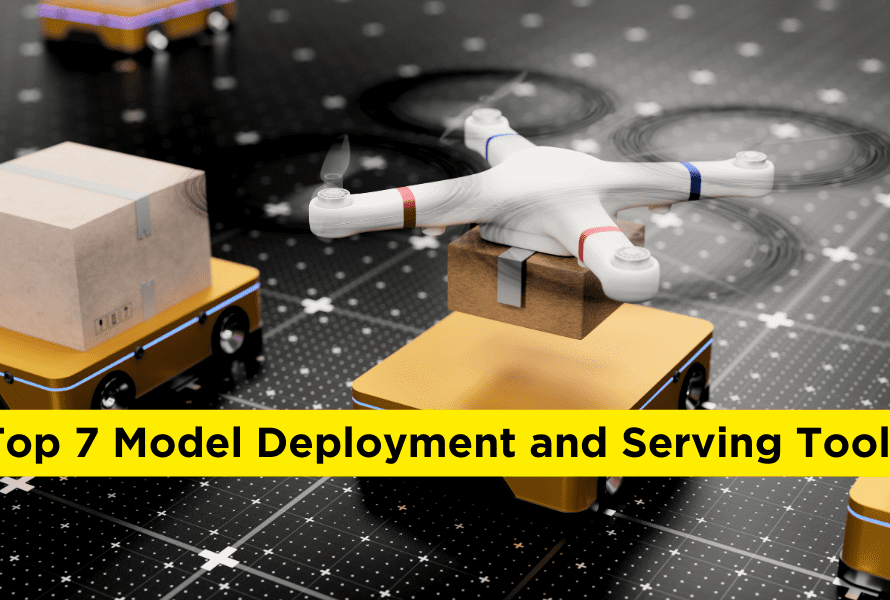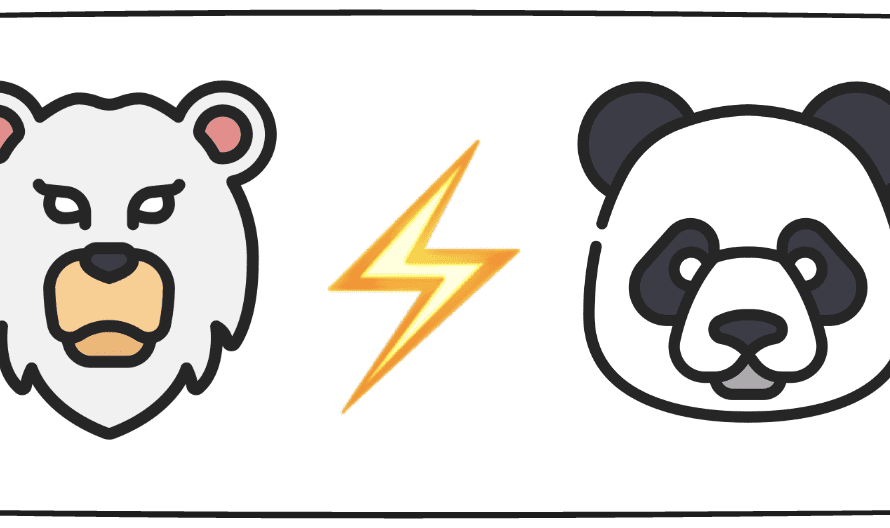[ad_1]

Image by Editor
The onset of Graphical Processing Units (GPUs), and the exponential computing power they unlock, has been a watershed moment for startups and enterprise businesses alike.
GPUs provide impressive computational power to perform complex tasks that involve technology such as AI, machine learning, and 3D rendering.
However, when it comes to harnessing this abundance of computational power, the tech world stands at a crossroads in terms of the ideal solution. Should you build a dedicated GPU machine or utilize the GPU cloud?
This article delves into the heart of this debate, dissecting the cost implications, performance metrics, and scalability factors of each option.
GPUs (Graphical Processing Units) are computer chips that are designed to rapidly render graphics and images by completing mathematical calculations almost instantaneously. Historically, GPUs were often associated with personal gaming computers, but they are also used in professional computing, with advancements in technology requiring additional computing power.
GPUs were initially developed to reduce the workload being placed on the CPU by modern, graphic-intensive applications, rendering 2D and 3D graphics using parallel processing, a method that involves multiple processors handling different parts of a single task.
In business, this methodology is effective in accelerating workloads and providing enough processing power to enable projects such as artificial intelligence (AI) and machine learning (ML) modeling.
GPU Use Cases
GPUs have evolved in recent years, becoming much more programmable than their earlier counterparts, allowing them to be used in a wide range of use cases, such as:
- Rapid rendering of real-time 2D and 3D graphical applications, using software like Blender and ZBrush
- Video editing and video content creation, especially pieces that are in 4k, 8k or have a high frame rate
- Providing the graphical power to display video games on modern displays, including 4k.
- Accelerating machine learning models, from basic image conversion to jpg to deploying custom-tweaked models with full-fledged front-ends in a matter of minutes
- Sharing CPU workloads to deliver higher performance in a range of applications
- Providing the computational resources to train deep neural networks
- Mining cryptocurrencies such as Bitcoin and Ethereum
Focusing on the development of neural networks, each network consists of nodes that each perform calculations as part of a wider analytical model.
GPUs can enhance the performance of these models across a deep learning network thanks to the greater parallel processing, creating models that have higher fault tolerance. As a result, there are now numerous GPUs on the market that have been built specifically for deep learning projects, such as the recently announced H200.
Many businesses, especially startups choose to build their own GPU machines due to their cost-effectiveness, while still offering the same performance as a GPU cloud solution. However, this is not to say that such a project does not come with challenges.
In this section, we will discuss the pros and cons of building a GPU machine, including the expected costs and the management of the machine which may impact factors such as security and scalability.
Why Build Your Own GPU Machine?
The key benefit of building an on-premise GPU machine is the cost but such a project is not always possible without significant in-house expertise. Ongoing maintenance and future modifications are also considerations that may make such a solution unviable. But, if such a build is within your team’s capabilities, or if you have found a third-party vendor that can deliver the project for you, the financial savings can be significant.
Building a scalable GPU machine for deep learning projects is advised, especially when considering the rental costs of cloud GPU services such as Amazon Web Services EC2, Google Cloud, or Microsoft Azure. Although a managed service may be ideal for organizations looking to start their project as soon as possible.
Let’s consider the two main benefits of an on-premises, self-build GPU machine, cost and performance.
Costs
If an organization is developing a deep neural network with large datasets for artificial intelligence and machine learning projects, then operating costs can sometimes skyrocket. This can hinder developers from delivering the intended outcomes during model training and limit the scalability of the project. As a result, the financial implications can result in a scaled-back product, or even a model that is not fit for purpose.
Building a GPU machine that is on-site and self-managed can help to reduce costs considerably, providing developers and data engineers with the resources they need for extensive iteration, testing, and experimentation.
However, this is only scratching the surface when it comes to locally built and run GPU machines, especially for open-source LLMs, which are growing more popular. With the advent of actual UIs, you might soon see your friendly neighborhood dentist run a couple of 4090s in the backroom for things such as insurance verification, scheduling, data cross-referencing, and much more.
Performance
Extensive deep learning and machine learning training models/ algorithms require a lot of resources, meaning they need extremely high-performing processing capabilities. The same can be said for organizations that need to render high-quality videos, with employees requiring multiple GPU-based systems or a state-of-the-art GPU server.
Self-built GPU-powered systems are recommended for production-scale data models and their training, with some GPUs able to provide double-precision, a feature that represents numbers using 64 bits, providing a larger range of values and better decimal precision. However, this functionality is only required for models that rely on very high precision. A recommended option for a double-precision system is Nvidia’s on-premise Titan-based GPU server.
Operations
Many organizations lack the expertise and capabilities to manage on-premise GPU machines and servers. This is because an in-house IT team would need experts who are capable of configuring GPU-based infrastructure to achieve the highest level of performance.
Furthermore, his lack of expertise could lead to a lack of security, resulting in vulnerabilities that could be targeted by cybercriminals. The need to scale the system in the future may also present a challenge.
On-premises GPU machines provide clear advantages in terms of performance and cost-effectiveness, but only if organizations have the required in-house experts. This is why many organizations choose to use GPU cloud services, such as Saturn Cloud which is fully managed for added simplicity and peace of mind.
Cloud GPU solutions make deep learning projects more accessible to a wider range of organizations and industries, with many systems able to match the performance levels of self-built GPU machines. The emergence of GPU cloud solutions is one of the main reasons people are investing in AI development more and more, especially open-source models like Mistral, whose open-source nature is tailor-made for ‘rentable vRAM’ and running LLMs without depending on larger providers, such as OpenAI or Anthropic.
Costs
Depending on the needs of the organization or the model that is being trained, a cloud GPU solution could work out cheaper, providing the hours it is needed each week are reasonable. For smaller, less data-heavy projects, there is probably no need to invest in a costly pair of H100s, with GPU cloud solutions available on a contractual basis, as well as in the form of various monthly plans, catering to the enthusiast all the way to enterprise.
Performance
There is an array of CPU cloud options that can match the performance levels of a DIY GPU machine, providing optimally balanced processors, accurate memory, a high-performance disk, and eight GPUs per instance to handle individual workloads. Of course, these solutions may come at a cost but organizations can arrange hourly billing to ensure they only pay for what they use.
Operations
The key advantage of a cloud GPU over a GPU build is in its operations, with a team of expert engineers available to assist with any issues and provide technical support. An on-premise GPU machine or server needs to be managed in-house or a third-party company will need to manage it remotely, coming at an additional cost.
With a GPU cloud service, any issues such as a network breakdown, software updates, power outages, equipment failure, or insufficient disk space can be fixed quickly. In fact, with a fully managed solution, these issues are unlikely to occur at all as the GPU server will be optimally configured to avoid any overloads and system failures. This means IT teams can focus on the core needs of the business.
Choosing between building a GPU machine or using the GPU cloud depends on the use case, with large data-intensive projects requiring additional performance without incurring significant costs. In this scenario, a self-built system may offer the required amount of performance without high monthly costs.
Alternatively, for organizations who lack in-house expertise or may not require top-end performance, a managed cloud GPU solution may be preferable, with the machine’s management and maintenance taken care of by the provider.
Nahla Davies is a software developer and tech writer. Before devoting her work full time to technical writing, she managed—among other intriguing things—to serve as a lead programmer at an Inc. 5,000 experiential branding organization whose clients include Samsung, Time Warner, Netflix, and Sony.
[ad_2]
Source link



